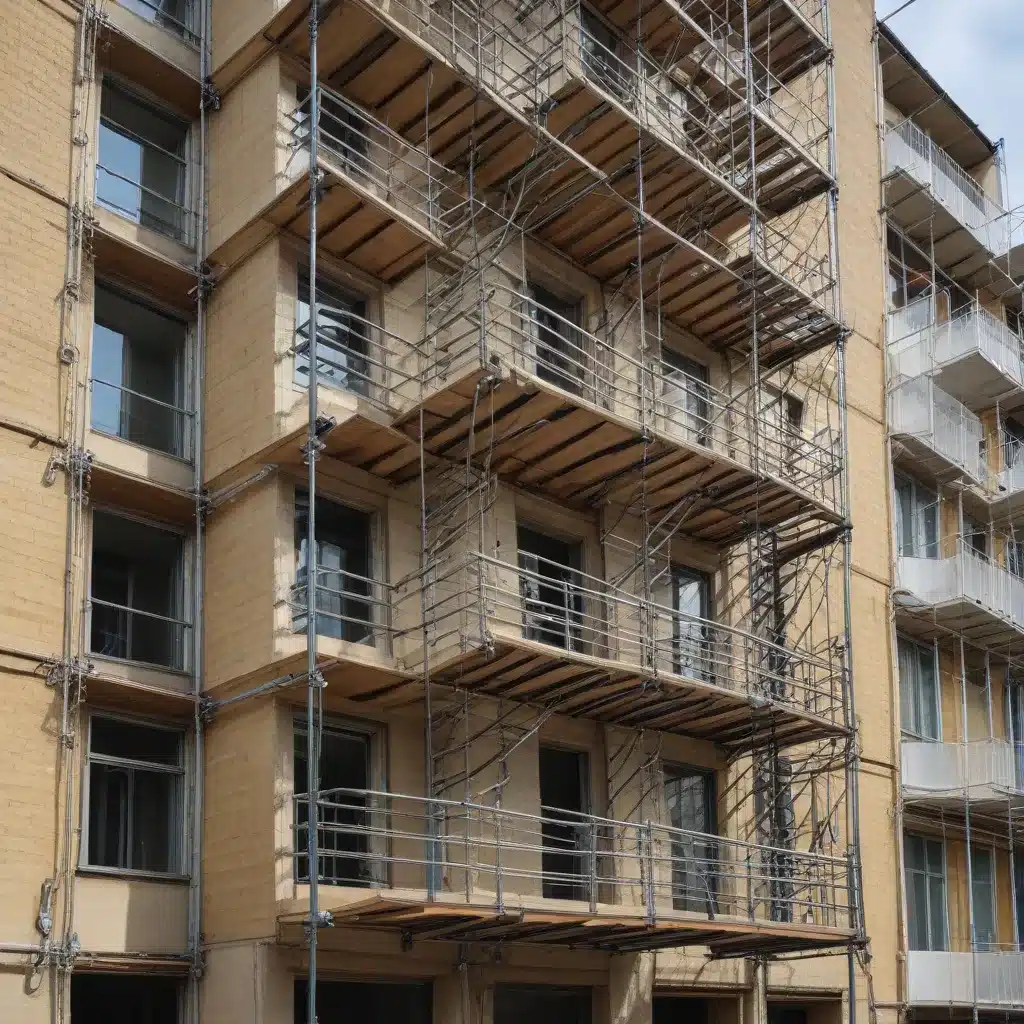
Navigating UAE’s Regulatory Landscape for Inclusive Scaffolding Solutions
The construction industry in the United Arab Emirates (UAE) has witnessed a remarkable transformation in recent years, with a growing emphasis on accessibility and inclusivity within the built environment. As the nation positions itself as a global leader in sustainable and accessible design, the role of scaffolding services has become increasingly crucial in shaping this inclusive vision.
Aligning with UAE Accessibility Regulations
The UAE has implemented comprehensive regulations to ensure that construction projects prioritize accessibility and accommodate individuals with diverse needs. The UAE Accessibility Code outlines stringent guidelines for the design, construction, and operation of buildings, infrastructure, and public spaces. These regulations mandate the integration of accessible features, such as:
- Ramps and Walkways: Gradual inclines and level transitions to facilitate the movement of wheelchair users and individuals with mobility challenges.
- Tactile Pavers and Wayfinding: Textured surfaces and clear signage to assist individuals with visual impairments in navigating the site.
- Wider Entrances and Passages: Ample clearance for wheelchairs, walkers, and other assistive devices.
- Specialized Scaffolding Solutions: Customized platforms, handrails, and access points designed to accommodate diverse user needs.
Compliance with these regulations is not only a legal requirement but also a testament to the UAE’s commitment to creating an inclusive and barrier-free built environment.
Cost-Effective Strategies for Inclusive Scaffolding
Implementing accessible scaffolding solutions can have significant cost implications for construction projects. However, with the right strategies, scaffolding providers in the UAE can deliver cost-effective and innovative designs that meet regulatory requirements.
One such approach is the use of modular scaffolding systems. These prefabricated components can be quickly assembled and disassembled, reducing labor costs and minimizing on-site disruptions. Additionally, the standardized nature of modular systems allows for easier incorporation of accessibility features, such as wider platforms and customized access points.
Another cost-saving measure is the strategic placement of scaffolding. By carefully planning the layout and positioning of scaffolding structures, construction teams can optimize the use of materials, minimize waste, and reduce the overall cost of the project. This holistic approach to scaffolding design ensures that accessibility needs are addressed without compromising budget constraints.
Innovative Scaffolding Techniques for Inclusive Access
Beyond the regulatory requirements, leading scaffolding providers in the UAE are embracing innovative techniques to enhance accessibility and inclusivity on construction sites. These advanced solutions not only address the needs of individuals with disabilities but also contribute to a safer and more efficient work environment for all.
One such innovation is the use of self-climbing scaffolding systems. These automated platforms can adjust their height and position, allowing for seamless access to different levels of the building, without the need for manual adjustments. This feature is particularly beneficial for individuals with limited mobility, as it eliminates the need for stairs or ladders.
Another groundbreaking solution is the integration of virtual reality (VR) technology in the scaffolding design process. By simulating the construction site and the proposed scaffolding layout, contractors can identify potential accessibility challenges and make adjustments before the physical implementation. This proactive approach ensures that accessibility is addressed at the planning stage, reducing the need for costly retrofits or modifications during the construction phase.
Investing in Safety and Training
Ensuring the safety of all individuals on a construction site is a paramount concern, and this extends to the scaffolding systems as well. Scaffolding providers in the UAE must adhere to rigorous safety standards, as outlined by the UAE Occupational Safety and Health Administration (OSHAD) and other regulatory bodies.
Key safety measures include:
- Comprehensive Training: Scaffolding workers must undergo extensive training in the assembly, inspection, and safe operation of scaffolding systems, with a strong emphasis on inclusivity and accessibility.
- Rigorous Inspections: Regular inspections by certified professionals ensure that scaffolding structures meet or exceed safety requirements, providing a secure environment for all users.
- Personal Protective Equipment (PPE): The provision of appropriate PPE, such as harnesses, helmets, and non-slip footwear, helps mitigate the risk of accidents and injuries.
By prioritizing safety and investing in comprehensive training programs, scaffolding providers in the UAE can create a culture of inclusivity and ensure the well-being of all individuals on the construction site.
Collaborating for Inclusive Designs
To truly achieve an inclusive built environment, scaffolding providers in the UAE must work closely with architects, designers, and accessibility experts. This collaborative approach ensures that the scaffolding solutions seamlessly integrate with the overall design vision and cater to the diverse needs of the end-users.
Through regular consultations and information-sharing, scaffolding providers can gain valuable insights into the latest accessibility trends, emerging technologies, and best practices from around the world. This knowledge-sharing can then be applied to the development of innovative scaffolding designs that exceed regulatory requirements and set new standards for inclusivity.
By embracing this collaborative spirit, the UAE’s scaffolding industry can become a driving force in the creation of a truly accessible and inclusive built environment, setting a precedent for the region and the global construction sector.
Conclusion: Shaping the Future of Inclusive Scaffolding
As the UAE continues to lead the way in sustainable and accessible construction, the role of scaffolding services has become increasingly vital. By aligning with the nation’s robust regulatory framework, implementing cost-effective strategies, and adopting innovative techniques, scaffolding providers can play a pivotal role in shaping an inclusive built environment that caters to the diverse needs of all individuals.
Through ongoing investments in safety, training, and collaborative partnerships, the UAE’s scaffolding industry is poised to redefine the standards of accessibility and inclusivity, cementing the country’s position as a global leader in the construction sector. As we look towards the future, the integration of inclusive scaffolding solutions will undoubtedly be a key driver in realizing the UAE’s vision of a truly accessible and barrier-free built environment.
Shera Scaffolding, a leading provider of scaffolding services in the UAE, is at the forefront of this transformative journey, committed to delivering innovative and inclusive solutions that meet the evolving needs of the construction industry.
